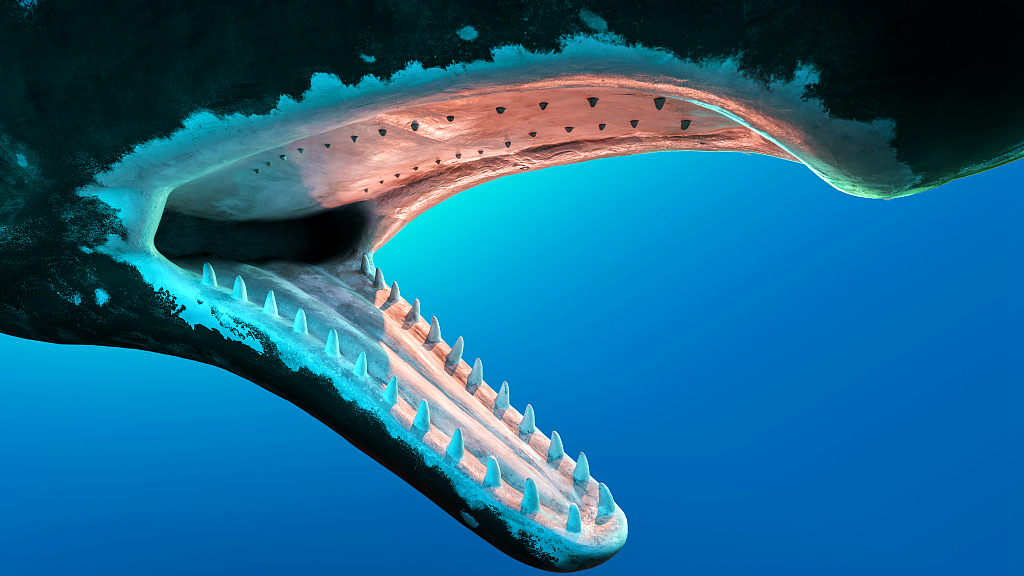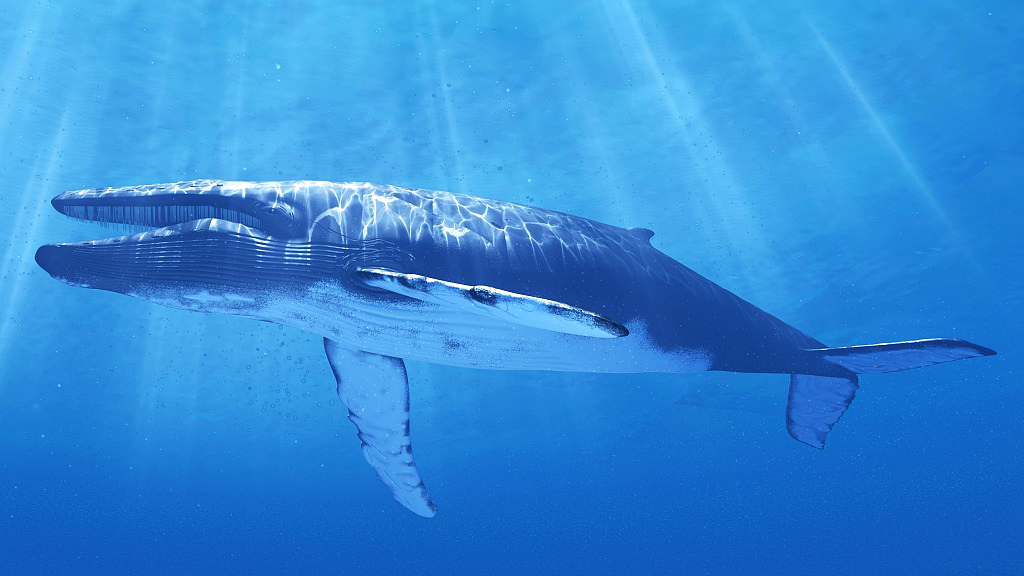Whales are big, but why aren't they bigger? A new study says it's basically about how many calories they can take in.
That's the conclusion of researchers who used small boats to chase down 300 whales of various species around the world. They reached out with a long pole to attach sensors to the creatures with suction cups, allowing them to record what the animals were doing on their dives for food.
The results suggest body size is controlled by how whales capture prey and how much food is available, researchers reported Thursday in the journal Science.

Model of the teeth of a sperm whale
Model of the teeth of a sperm whale
The study included 90 blue whales, the biggest animal ever to live that can grow about 30 meters long and weigh more than 91,000 kilograms. The study also included the biggest whale with teeth, the sperm whale, which can stretch about 18 meters long.
When toothed whales hunt, they capture one prey at a time, seeking them out in the murky depths with a sonar-like detection. The study found that as body size increases in such whales, they become progressively less efficient as they hunt – they recover fewer calories from their meals per calorie burned in each dive. That results from limits on availability of prey.

Computer artwork of a blue whale
Computer artwork of a blue whale
The blue whale can be bigger because it feeds on krills in a much different and highly efficient way. But why aren't they even bigger than they are? Maybe blue whales are limited by the seasonal nature of the most nutritious krill patches, which grow gigantic and dense in the summer. And calculations indicate that to sustain a blue whale that's 35 meters long, it needs to be a density of prey that is just not seen anywhere in the world.
(If you want to contribute and have specific expertise, please contact us at nature@cgtn.com.)
Source(s): AP